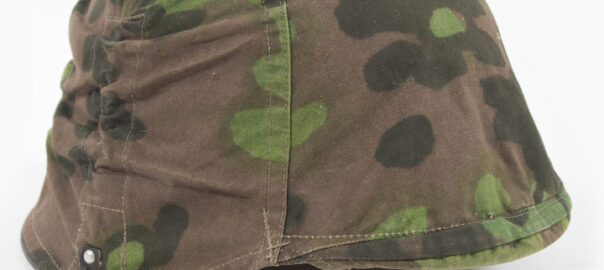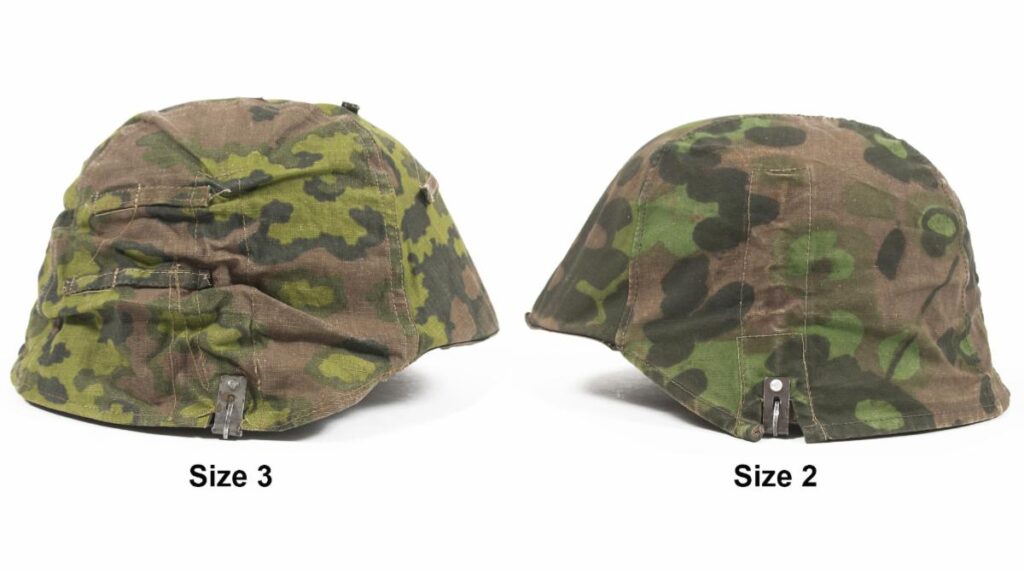 The two original covers used for our patterns.
The two original covers used for our patterns.
German camouflage is one of the most popular categories of militaria both in the collector market as well as among reenactors/ living historians. With originals being some of the most expensive clothing in the universe, knowing what’s what can potentially mean thousands of dollars made or squandered for those attempting to hoard it. It also means that many people don’t have access to the authentic examples aside from images on the internet and in reference books.
Naturally, this has led to much expertise posted online being based on such photos or, amusingly, examination of reproductions that were supposedly copied directly from originals. When one has actual WWII examples in hand, it’s often obvious that there might have been some exaggeration somewhere along the line.
Due to some enthusiasts being loyal fans of particular brands of reproductions, we occasionally get lectured on the shortcomings of ours due to them not matching up to this or that other reproduction.
This is easily refuted by showing the old junk I copied, something rarely seen elsewhere- which actually surprises me a bit. As a bonus, I know that many others enjoy these displays and keeps the spam less boring than simply “here’s our stuff- please buy it.” Ugh.
OK, helmet cover details. WWII Waffen-SS covers have a somewhat distinct fit. Unless one has made helmet covers (or hats) it’s probably not obvious how a very small difference (like 1cm) in the size of a panel or a minute change in a radius can make a night and day difference in the end result. In other words, it’s much harder to get this right than it appears.

The photo above shows the two original covers used for our penultimate patterns we now use. The size 3 is a late War type with every time saving change possible used in its construction. The size 2 is a typical early example.
I made my first helmet cover in 1988, using a reproduction I cut up for the pattern- one that, luckily, turned out not to be not too far off of the originals. Years later when I became a militaria merchant, I tweaked that pattern down a bit to create a size 2.
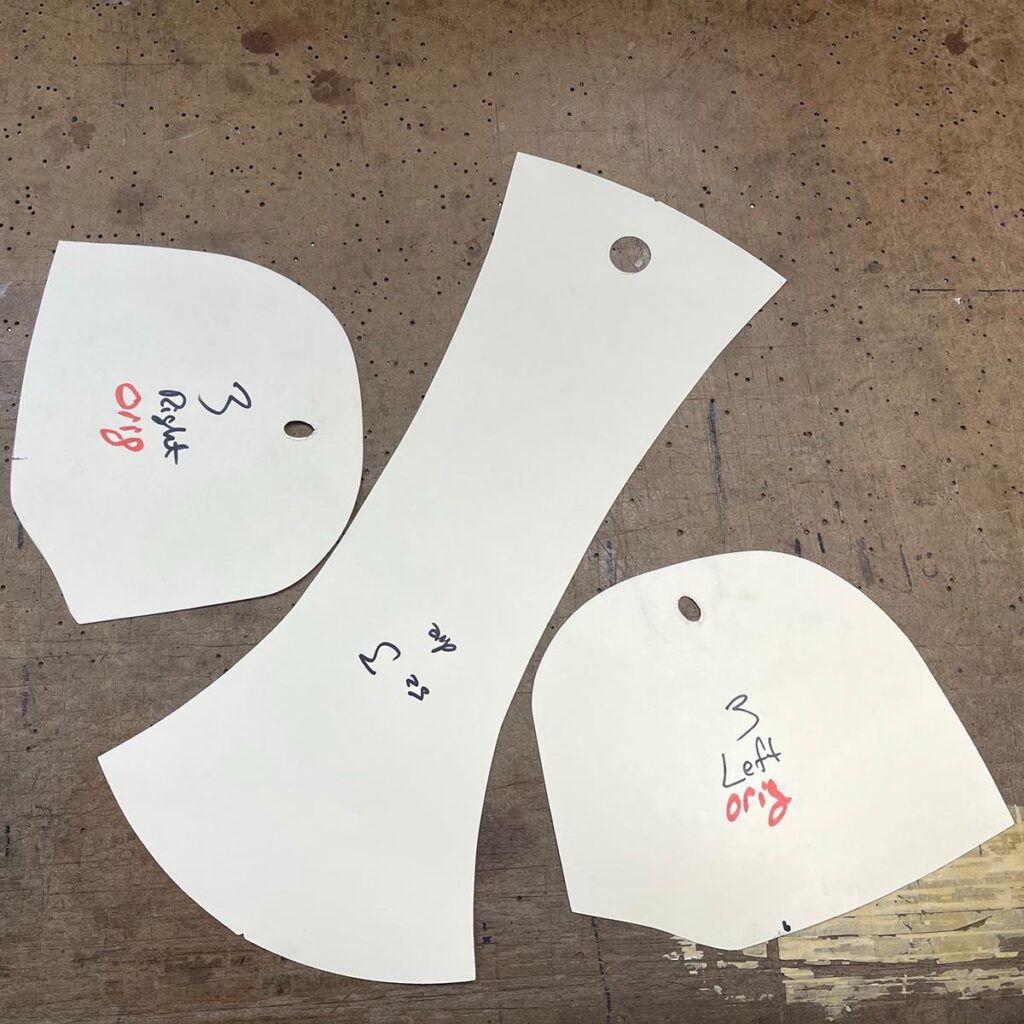 The three main panels of a cover
The three main panels of a cover
As time went by and I began to acquire original covers, I noticed that they had a better fit than ours. I could see that the center panel was narrower and more flared at the ends than mine. So, I set out to perfect the pattern based on actual WWII covers.
My pattern-making training is largely by experience- decades later I’m still only a novice. This, combined with originals being too expensive to disassemble meant endless trial and error. It turned out to be be far more difficult to reverse engineer the curves of the center panel and particularly the forward faces of the sides than I dreamed. At one point I was seriously contemplating disassembly of a damaged size 2 that I had. (Not pictured).
Would anyone notice? Probably not. Would we sell more if I got the curve right? Doubtful. It just triggered my side of the spectrum and drove me nuts. Luckily for the damaged cover, after a dozen or more tweaks and test covers, we got it right.
The center panel is notably flared at the ends. On WWII covers, the center panel is about 9-10cm wide at the top of the helmet and it broadens out to 19-22cm (depending on the size) where it meets the visor. The side panels are far more squarish than one might expect.
As stated above, a small change can wreck the cover- if the seam allowance isn’t observed (1.5cm) or the cutter slices off too much of a panel the cover will instantly become one size (or more) smaller than intended.
This is why we sew the blasted things here- the overseas contractors can make a nice tunic, but they jack up helmet covers every try.
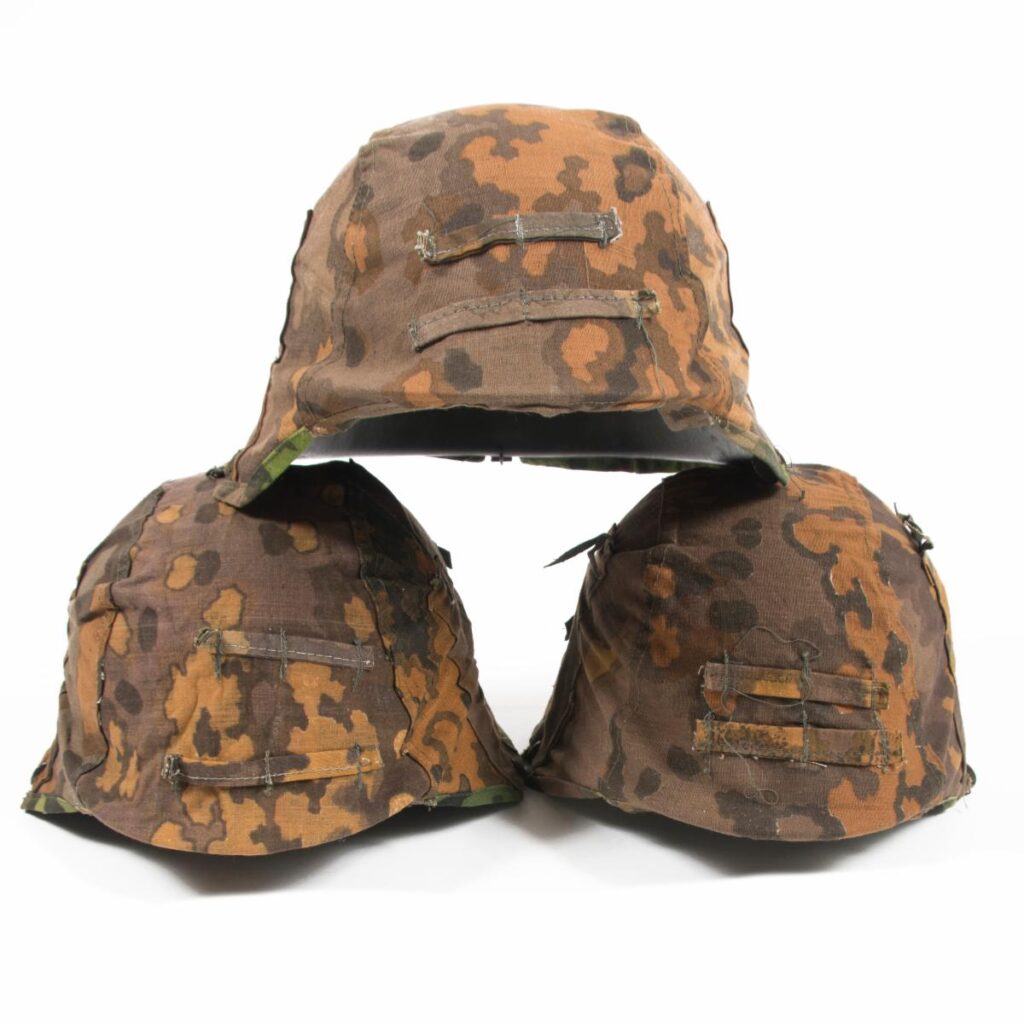
Yes, originals do vary some but not as much as one might assume considering the circumstances under which these were likely made. Despite WWII covers, particularly the late ones, having rather erratic visors, spring covers and camo loops, with stitching that often looks like chit, the manufacturing tolerances where it counted appear to have been adhered to pretty closely.
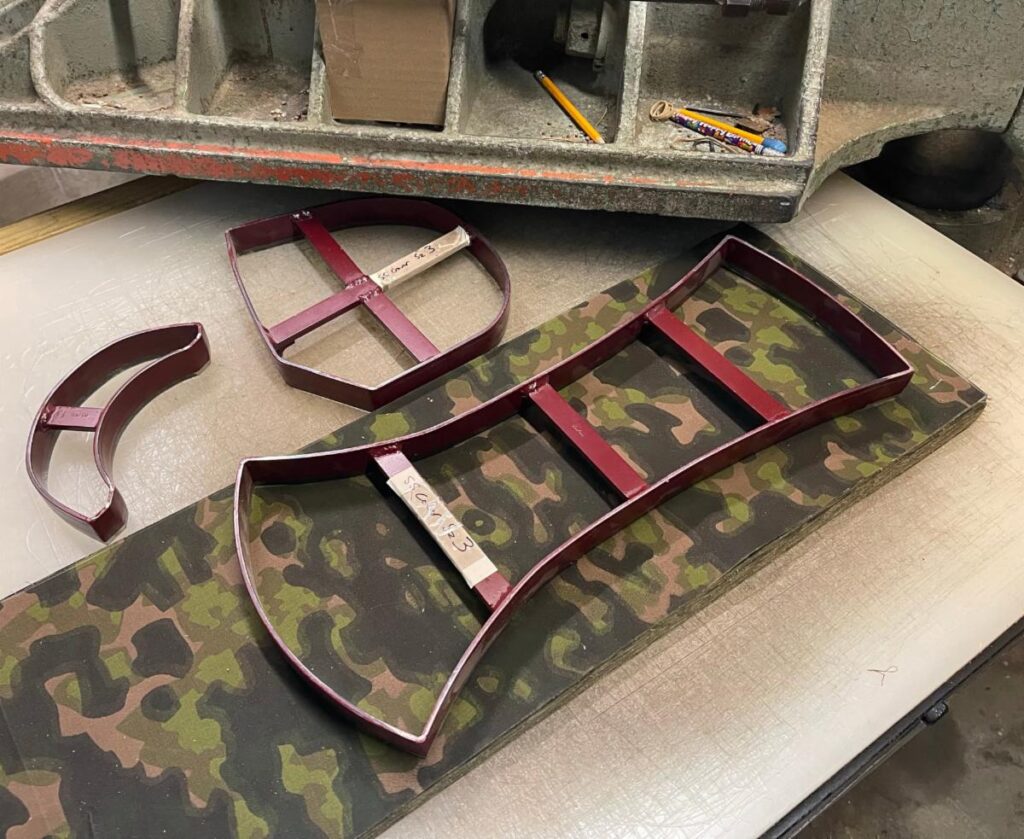 One punch = 30 panels
One punch = 30 panels
For more insurance, we went the extra mile and had cutting dies made for helmet covers (and camo caps.) This prevents any cutting errors and keeps the parts totally consistent year after year.
Was this done in WWII? There’s no way to know, but it’s been fairly common practice at sewing factories for over a century so I consider it likely. It can save several minutes per item which is an eternity for a garment contractor.
